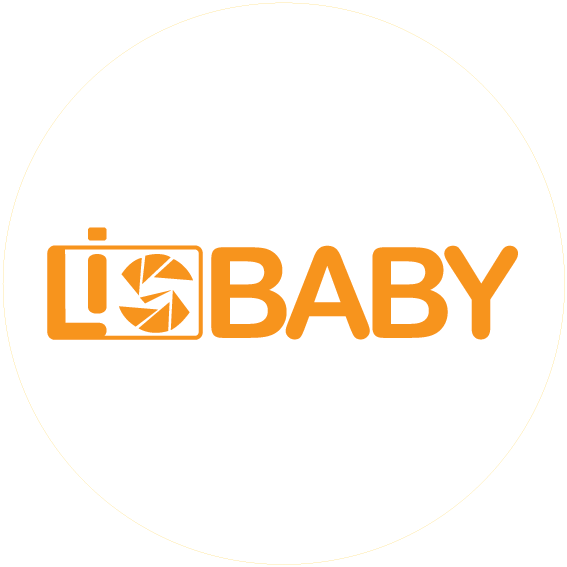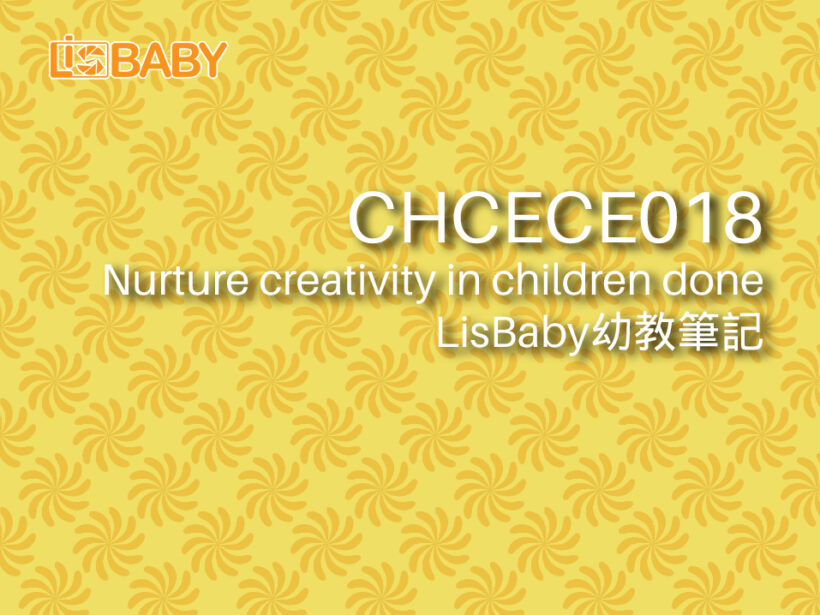今天給大家分享的幼教筆記課題是「CHCECE018 Nurture creativity in children done」中文意思是「培養孩子的創造力完成」。這個課題對於以後做老師設計每日教學內容很重要,尤其是在你的設計教學課程如何培養小孩對事物的創造力和思維。以下是小編覺得比較主要的內容,如果你有補充歡迎留言分享。謝謝!!!
When determining the correct level of supervision, take the following considerations into account:
• Number of children.
• Ages of children.
• Abilities or disabilities of children.
• Skills and experience of educators.
• The nature of the activity and the materials being used.
• The location of the activity including visibility and access.
• Potential risks and hazards of the activity.
• Educators’ knowledge of each child’s needs and abilities.
The learning framework designed for the children in care should be planned around the approved and recognised learning framework.
The learning outcomes are:
• Children have a strong sense of identity.
• Children are connected with and contribute to their world.
• Children have a strong sense of wellbeing.
• Children are confident and involved learners.
• Children are effective communicators.
The principles are:
• Secure, respectful and reciprocal relationships.
• Partnerships with families.
• High expectations and equity.
• Respect for diversity.
• Ongoing learning and reflective practice.
The practice is:
• Holistic approaches.
• Responsiveness to children.
• Learning through play.
• Intentional teaching.
• Learning environments.
• Cultural competence.
• Continuity of learning and transitions.
• Assessment for learning.
Plan and design activities for the following expressive arts:
• Music which can include:
– singing—solo, duos, trios, quartets, choirs.
– playing musical instruments—drums, xylophone, piano/keyboard, recorder, castanets, shakers, guitar.
– making musical instruments—shakers, drums, horns.
– recording music.
– live performances for peers and parent/carers.
– conducting.
– experimenting with different styles of music such as pop, classical, opera, tribal or multicultural.
– visits to theatres to watch musical performances.
• Movement:
– Dancing, either individually, with partners or in groups.
– different styles of dancing such as ballet, tap or ballroom.
– choreography.
– puppet shows.
– mime.
– juggling.
– costume design.
– making props for performance.
– live performances for peers and parents/carers.
• Construction:
– planning and design.
– drawing plans.
– measuring.
– calculating resources required.
– building.
– decorating.
– sand sculptures.
• Visual art, such as:
– Painting.
– Sculpting.
– sketching/drawing.
– collage.
– textile work.
– graphic design.
• Dramatic play, such as:
– role play.
– re-enactment
– monologue.
– performance poetry.
– improvisation.
– drama sketches.
– costume design.
– set design.
– prop design.
Indoor environments include:
• Classroom.
• Music room/recording suite.
• Theatre/dance studio.
• Gymnasium/sports centres and facilities.
• Technology workshop.
• Kitchen.
• ICT suite (information and communication technologies).
• Scientific laboratory.
• Museums.
• Libraries.
Outdoor environments include:
• Playground.
• Parks and woodland areas.
• Beach/sandpit.
• Swimming pool.
• Local community.
• Multi-sensory gardens.
• Mazes.
• Visits to historical monuments.
• Field trips.
Natural elements include:
- Vegetable gardens.
- Flowers, plants, trees or gardens.
- Sandpits and dirt for digging.
- Cultural areas within the local community.
- Watercourses containing animal and plant life as well as pebbles, gravel and sand.
- Plants and trees with edible features.
- Plants that encourage wildlife such as birds, butterflies and insects.
- Trees to provide shade.
- Compost areas.
- Water play area.
Skills and abilities that could be evaluated include:
- Reading.
- Writing.
- Oral Communication.
- Numeracy.
- Independent learning.
- Independent thought.
- Critical reflection.
- Collaboration with others.
- Creativity.
- Innovation.
- Problem-solving.
- Ability to use equipment.
- Ability to select appropriate materials.
Ways in which learning, development and understanding can be assessed and measured include:
- Written assessments.
- Question papers.
- Multiple-choice assessments.
- Picture tests.
- Oral assessment.
- Practical assessment.
- Listening tests.
Factors to consider prior to any modifications might include:
- General learning environments.
- Reducing the size of a playing area to accommodate children with disabilities.
- Confirming the number of children and educators in a group.
- Upgrading the duration (and difficulty) of an activity.
- Changing the number of elements or tasks within an activity.
- Changing topics and subject matter for activities and experiences.
- Changing assessment methods, based on the individual child’s abilities.
- Assessment of materials and equipment used.
- Assessment of the types of expressive art available.
【關於LisBaby旅食百變】
 訂閱“LisBaby旅食百變的YouTube頻道”看新片!
訂閱“LisBaby旅食百變的YouTube頻道”看新片! 追蹤“LisBaby旅食百變的Facebook專頁”了解最新動向!
追蹤“LisBaby旅食百變的Facebook專頁”了解最新動向! 更新“LisBaby旅食百變的網站”看新的文章吧!
更新“LisBaby旅食百變的網站”看新的文章吧! 歡迎商業合作請「聯絡我們」感謝!
歡迎商業合作請「聯絡我們」感謝!

